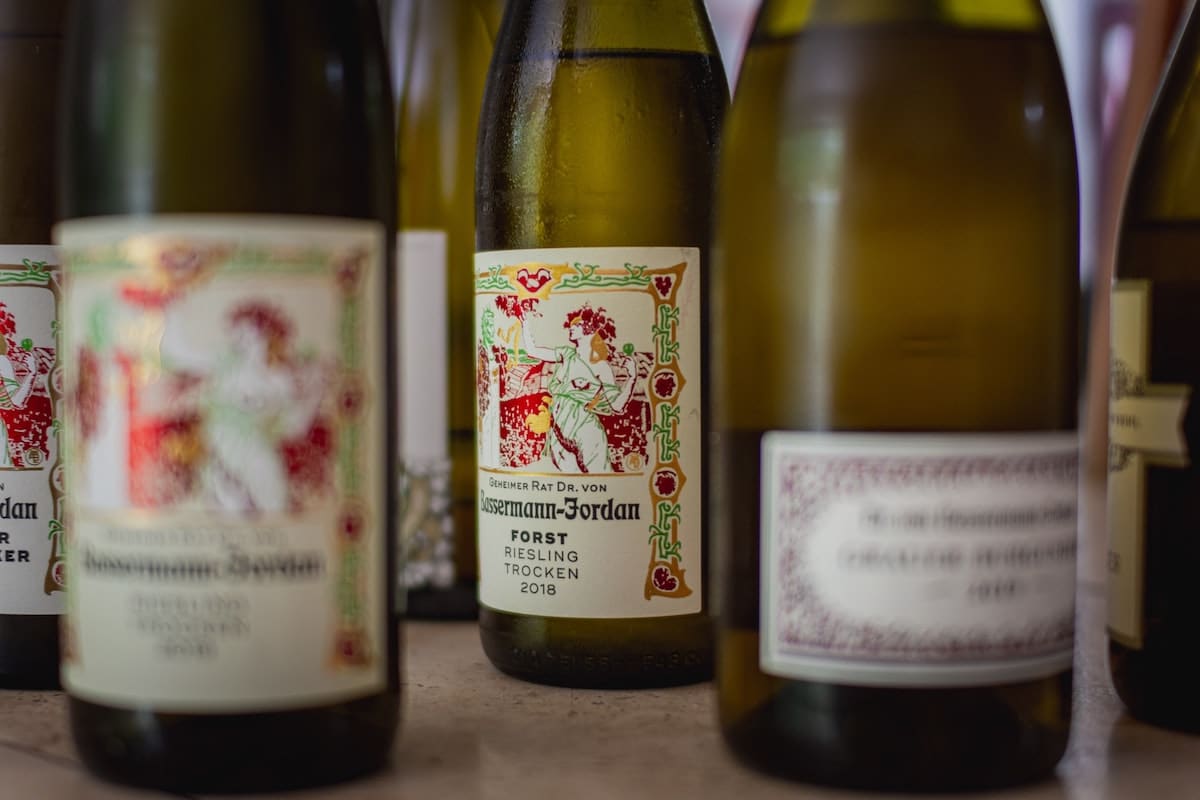Table of Contents
Wine labels are more than just something a pretty paper on the bottle. They are the first thing a potential buyer sees and can be used as a marketing tool. Designing an eye-catching wine label is essential to set your product apart on the shelf. A well-designed label can help you stand out from competitors, grab customers’ attention, and make a lasting impression. The best labels are creative and unique while still conveying the core elements that make up your brand. Here are eight tips for creating a distinctive wine label printing that will get noticed.
Choose Quality Materials
Quality materials are paramount when it comes to creating a great-looking wine label. You want your wine label to have the right look and feel, so think about what materials you want. High-quality materials will give your labels a professional finish and ensure they last longer. Consider different paper types, adhesives, coatings, inks, and other finishes to create the perfect look for your wine bottles. If you want your product to have a unique look or feel, consider using white foil stamping. You can use recycled paper or plastic bags, but make sure the colours match your brand colours.
Get Creative With Color
Colour plays a vital role in creating a distinctive wine label design that stands out from the rest of the crowd! Bold colours attract customers’ attention and create an emotional connection to your product. Consider using colours that evoke strong feelings such as warmth or sophistication or have symbolic meanings associated with them, like blue for trustworthiness or yellow for joyfulness. The right colour can help set off an image or feeling in people’s minds about what kind of wine it should be.
Show Off Your Brand
The next important thing to consider when designing a wine label is to show off your brand’s personality and style. Your brand is what sets your product apart from others in the market. Use your logo, tagline, font style, and other branding elements on each label to ensure people recognise your brand at first glance. It includes choosing a font style and size that matches your brand’s logo and using colours that work with your other branding elements, like packaging and labels. It will help reinforce the message you want to convey about the quality of your product and build trust with potential customers.
Showcase Your Unique Selling Point
Your wine label is the first thing people see when they enter your store or restaurant. It should be their first impression of your business and reflect its core values. Incorporate your product’s unique features into the label’s design. It can help customers know what sets your wine apart from others on the shelf right away (e.g., organic ingredients or locally sourced grapes). By doing this, you will be able to attract potential customers and convince them to buy your product. This could be done through text-based descriptions or illustrations of relevant aspects of production/origin/ingredients etc.
Keep it Simple
The less complicated your label is, the better. Too much text or too many elements on one side can be overwhelming, so try to keep things concise by maintaining a balanced approach to designing. If needed, fit all necessary information without overcrowding it onto one side only. Additionally, consider using different fonts and sizes strategically to draw attention to certain sections more than others depending on their importance relative to each other (i.e., smaller font sizes for less critical information). By keeping things simple, you ensure everyone knows what they’re getting when purchasing your product!
Include Relevant Information
Another important tip when creating a distinctive wine label is ensuring that all relevant information regarding production, ingredients and alcohol content is clearly visible so that consumers know what they’re buying. Also, think outside the traditional box by providing additional details related to sustainability efforts taken during production, recipes that pair well with specific types etc. This will add value for potential customers who may appreciate learning more about what goes into producing their favourite wines!
Don’t Forget About Barcodes
A barcode is the easiest way to put your product in front of the customer and can be incredibly effective. They are a great way to ensure that your wine is correctly identified and tracked. The barcode should be in the label’s upper right-hand corner and easy to scan by anyone holding the bottle up to their eyes! Additionally, including QR codes that link directly back to website pages where people can learn more about specific types of wines is another excellent way to engage even further with potential customers.
Get Creative
There are many ways to add a message to your wine label. In fact, there are so many choices that it’s almost overwhelming! But even if you don’t have any experience designing labels, you can always get creative and find something that works for you. One great way to do this is by pulling from other industries and looking for inspiration in their designs. You can also use different font sizes, such as bold and italicised text if it helps distinguish your product from others.
Final Takeaway
Creating a distinctive bottle label printing requires careful thought and consideration to capture customers’ attention while still conveying all necessary information required by regulation standards as well as tips/tricks related directly to their purchasing decision process (i.e., pairing recommendations, sustainability efforts taken production etc.). By utilising these eight tips outlined above when designing yours – you’ll be able to craft eye-catching labels that set your wine apart from your competitors on store shelves! You can also reach out to DAL for creative and high-quality label printing or for buying Label printers in Australia. They are the best in the printing industry and are widely popular for their customer service. Good luck!


